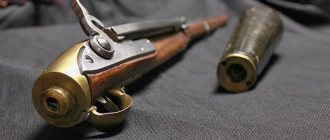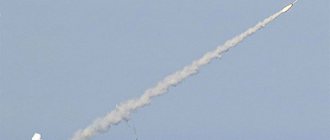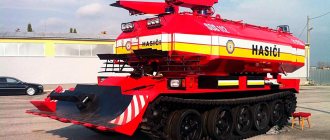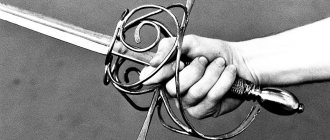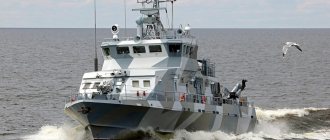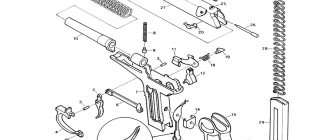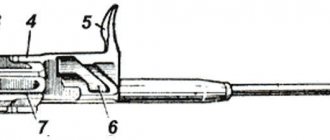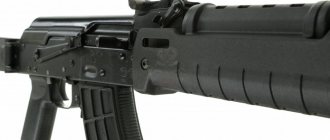Modern warfare is fast and fleeting. Often the winner in a combat clash is the one who is the first to detect a potential threat and respond adequately to it. For more than seventy years, a radar method based on the emission of radio waves and recording their reflections from various objects has been used to search for the enemy on land, sea and in the air. Devices that send and receive such signals are called radar stations (RLS) or radars.
The term “radar” is an English abbreviation (radio detection and ranging), which was put into circulation in 1941, but has long since become an independent word and has entered most languages of the world.
The invention of radar is, of course, a landmark event. It is difficult to imagine the modern world without radar stations. They are used in aviation, in maritime transportation; with the help of radar, the weather is predicted, violators of traffic rules are identified, and the earth's surface is scanned. Radar systems (RLC) have found their application in the space industry and in navigation systems.
However, radars have found their most widespread use in military affairs. It should be said that this technology was originally created for military needs and reached the stage of practical implementation just before the start of World War II. All the largest countries participating in this conflict actively (and not without results) used radar stations for reconnaissance and detection of enemy ships and aircraft. It can be confidently stated that the use of radars decided the outcome of several landmark battles both in Europe and in the Pacific theater of operations.
Today, radars are used to solve an extremely wide range of military tasks, from tracking the launch of intercontinental ballistic missiles to artillery reconnaissance. Each plane, helicopter, and warship has its own radar complex. Radars are the backbone of the air defense system. The latest phased array radar system will be installed on the promising Russian Armata tank. In general, the variety of modern radars is amazing. These are completely different devices that differ in size, characteristics and purpose.
We can say with confidence that today Russia is one of the recognized world leaders in the development and production of radars. However, before talking about trends in the development of radar systems, a few words should be said about the principles of operation of radars, as well as about the history of radar systems.
How does radar work?
Location is the method (or process) of determining the location of something. Accordingly, radar is a method of detecting an object or object in space using radio waves that are emitted and received by a device called a radar or radar.
The physical principle of operation of a primary or passive radar is quite simple: it transmits radio waves into space, which are reflected from surrounding objects and return to it in the form of reflected signals. By analyzing them, the radar is able to detect an object at a certain point in space, as well as show its main characteristics: speed, altitude, size. Any radar is a complex radio device consisting of many components.
Any radar consists of three main elements: a signal transmitter, an antenna and a receiver. All radar stations can be divided into two large groups:
- pulse;
- continuous action.
The pulse radar transmitter emits electromagnetic waves for a short period of time (fractions of a second), the next signal is sent only after the first pulse returns back to the receiver. Pulse repetition rate is one of the most important characteristics of a radar. Low frequency radars send out several hundred pulses per minute.
The pulse radar antenna works both for reception and transmission. After the signal is emitted, the transmitter turns off for a while and the receiver turns on. After taking it, the reverse process occurs.
Pulse radars have both disadvantages and advantages. They can determine the range of several targets at once; such a radar can easily make do with one antenna; the indicators of such devices are simple. However, the signal emitted by such a radar must have quite high power. You can also add that all modern tracking radars are made using a pulse circuit.
In pulsed radar stations, magnetrons, or traveling wave tubes, are usually used as a signal source.
The radar antenna focuses and directs the electromagnetic signal, picks up the reflected pulse and transmits it to the receiver. There are radars in which the signal is received and transmitted by different antennas, and they can be located at a considerable distance from each other. The radar antenna is capable of emitting electromagnetic waves in a circle or operating in a specific sector. The radar beam can be directed in a spiral or shaped like a cone. If necessary, the radar can track a moving target by constantly pointing the antenna at it using special systems.
The functions of the receiver include processing the received information and transmitting it to the screen from which it is read by the operator.
In addition to pulsed radars, there are also continuous radars that constantly emit electromagnetic waves. Such radar stations use the Doppler effect in their work. It lies in the fact that the frequency of the electromagnetic wave reflected from an object that is approaching the signal source will be higher than from a receding object. In this case, the frequency of the emitted pulse remains unchanged. Radars of this type do not detect stationary objects; their receiver only picks up waves with a frequency higher or lower than the emitted one.
A typical Doppler radar is the radar used by traffic police to determine the speed of vehicles.
The main problem with continuous-wave radars is their inability to determine the distance to an object, but during their operation there is no interference from stationary objects between the radar and the target or behind it. In addition, Doppler radars are fairly simple devices that only need low-power signals to operate. It should also be noted that modern continuous-wave radar stations have the ability to determine the distance to an object. This is done by changing the radar frequency during operation.
One of the main problems in the operation of pulsed radars is interference that comes from stationary objects - as a rule, these are the earth's surface, mountains, and hills. When on-board pulse radars of aircraft operate, all objects located below are “obscured” by the signal reflected from the earth’s surface. If we talk about ground-based or ship-based radar systems, then for them this problem manifests itself in detecting targets flying at low altitudes. To eliminate such interference, the same Doppler effect is used.
In addition to primary radars, there are also so-called secondary radars, which are used in aviation to identify aircraft. Such radar systems, in addition to the transmitter, antenna and receiver, also include an aircraft transponder. When irradiated with an electromagnetic signal, the transponder provides additional information about the altitude, route, aircraft number, and nationality.
Radar stations can also be divided according to the length and frequency of the wave on which they operate. For example, to study the Earth's surface, as well as to work at significant distances, waves of 0.9-6 m (frequency 50-330 MHz) and 0.3-1 m (frequency 300-1000 MHz) are used. For air traffic control, a radar with a wavelength of 7.5-15 cm is used, and over-the-horizon radars of missile launch detection stations operate at waves with a length of 10 to 100 meters.
Cold War radars
During the Cold War, a new type of destructive weapon emerged in the United States and the Soviet Union. Of course, this was the advent of intercontinental ballistic missiles. Timely detection of launches of such missiles was vital.
Soviet scientist Nikolai Kabanov proposed the idea of using short radio waves to detect enemy aircraft at significant distances (up to 3000 km). Everything was quite simple. The scientist was able to discover that 10-100-meter radio waves tend to be reflected from the ionosphere.
Thus, when targets on the earth's surface are irradiated, they also return back to the radars. Later, based on this idea, scientists were able to develop radars with over-the-horizon detection of ballistic missile launches. An example of such installations can be “Daryal” - a radar station. For decades it was at the heart of Soviet systems for preventing missile launches.
Today, the most promising direction in the development of radar systems is considered to be the creation of radar stations with phased array antennas (PAA). Such devices have not one, but hundreds of radio wave emitters. All their functioning is controlled by powerful computers. Radio waves emitted from different sources in a phased array can amplify one another, or vice versa, when they are in phase or attenuated.
Phased array radar signals can be given any desired shape. They can move in space without changes in the positions of the antennas themselves, and also operate at different radiation frequencies. Phased array radars are considered more reliable and sensitive than similar devices with conventional antennas.
However, such radars also have disadvantages. The biggest problems with phased array radars are their cooling systems. Moreover, such radar installations are extremely complex to manufacture and are also very expensive.
History of radar
The idea of radar arose almost immediately after the discovery of radio waves. In 1905, Christian Hülsmeyer, an employee of the German company Siemens, created a device that could detect large metal objects using radio waves. The inventor proposed installing it on ships so that they could avoid collisions in poor visibility conditions. However, ship companies were not interested in the new device.
Experiments with radar were also carried out in Russia. Back in the late 19th century, Russian scientist Popov discovered that metal objects interfere with the propagation of radio waves.
In the early 20s, American engineers Albert Taylor and Leo Young managed to detect a passing ship using radio waves. However, the state of the radio engineering industry at that time was such that it was difficult to create industrial samples of radar stations.
The first radar stations that could be used to solve practical problems appeared in England around the mid-30s. These devices were very large and could only be installed on land or on the deck of large ships. It was only in 1937 that a prototype of a miniature radar was created that could be installed on an aircraft. By the beginning of World War II, the British had a deployed chain of radar stations called Chain Home.
We were engaged in a new promising direction in Germany. And, I must say, not without success. Already in 1935, a working radar with a cathode-ray display was demonstrated to the Commander-in-Chief of the German Navy, Raeder. Later, serial models of radars were created on its basis: Seetakt for the naval forces and Freya for air defense. In 1940, the Würzburg radar fire control system began to arrive in the German army.
However, despite the obvious achievements of German scientists and engineers in the field of radar, the German army began to use radars later than the British. Hitler and the top of the Reich considered radars to be exclusively defensive weapons that were not particularly needed by the victorious German army. It is for this reason that by the beginning of the Battle of Britain the Germans had deployed only eight Freya radar stations, although their characteristics were at least as good as their English counterparts. In general, we can say that it was the successful use of radar that largely determined the outcome of the Battle of Britain and the subsequent confrontation between the Luftwaffe and the Allied Air Force in the skies of Europe.
Later, the Germans, based on the Würzburg system, created an air defense line, which was called the “Kammhuber Line”. Using special forces units, the Allies were able to unravel the secrets of the German radars, which made it possible to effectively jam them.
Despite the fact that the British entered the “radar” race later than the Americans and Germans, they managed to overtake them at the finish line and approach the beginning of World War II with the most advanced aircraft radar detection system.
Already in September 1935, the British began building a network of radar stations, which before the war already included twenty radar stations. It completely blocked the approach to the British Isles from the European coast. In the summer of 1940, British engineers created a resonant magnetron, which later became the basis for airborne radar stations installed on American and British aircraft.
Work in the field of military radar was also carried out in the Soviet Union. The first successful experiments in detecting aircraft using radar stations in the USSR were carried out back in the mid-30s. In 1939, the first radar RUS-1 was adopted by the Red Army, and in 1940 - RUS-2. Both of these stations were put into mass production.
The Second World War clearly demonstrated the high efficiency of using radar stations. Therefore, after its completion, the development of new radars became one of the priority areas for the development of military equipment. Over time, all military aircraft and ships without exception received airborne radars, and radars became the basis for air defense systems.
During the Cold War, the United States and the USSR acquired new destructive weapons - intercontinental ballistic missiles. Detection of the launch of these missiles became a matter of life and death. Soviet scientist Nikolai Kabanov proposed the idea of using short radio waves to detect enemy aircraft at long distances (up to 3 thousand km). It was quite simple: Kabanov found out that radio waves 10-100 meters long are capable of being reflected from the ionosphere, and irradiating targets on the surface of the earth, returning the same way to the radar.
Later, based on this idea, radars for over-the-horizon detection of ballistic missile launches were developed. An example of such radars is Daryal, a radar station that was the basis of the Soviet missile launch warning system for several decades.
Currently, one of the most promising areas for the development of radar technology is the creation of phased array radars (PAR). Such radars have not one, but hundreds of radio wave emitters, the operation of which is controlled by a powerful computer. Radio waves emitted by different sources in a phased array can enhance each other if they are in phase, or, conversely, weaken each other.
The phased array radar signal can be given any desired shape, it can be moved in space without changing the position of the antenna itself, and it can work with different radiation frequencies. A phased array radar is much more reliable and sensitive than a radar with a conventional antenna. However, such radars also have disadvantages: a big problem is the cooling of phased array radars; in addition, they are difficult to manufacture and expensive.
New phased array radars are being installed on fifth-generation fighters. This technology is used in the American missile attack early warning system. The radar system with phased array will be installed on the newest Russian Armata tank. It should be noted that Russia is one of the world leaders in the development of phased array radars.
Radar in military service
Still, the military liked radars most of all. Moreover, these technologies were originally created for military use and were practically implemented before the Second World War. All major states actively used radar to detect enemy ships and aircraft. Moreover, their use decided the outcome of many battles.
Today, new radar stations are used in a very wide range of military tasks. This includes tracking intercontinental ballistic missiles and artillery reconnaissance. All planes, helicopters, and warships have their own radar. Radars are generally the basis of air defense systems.
